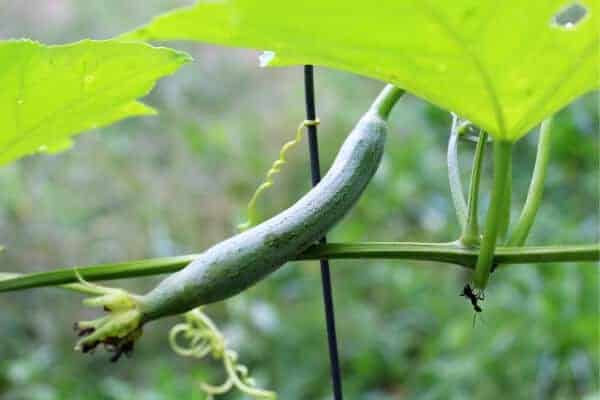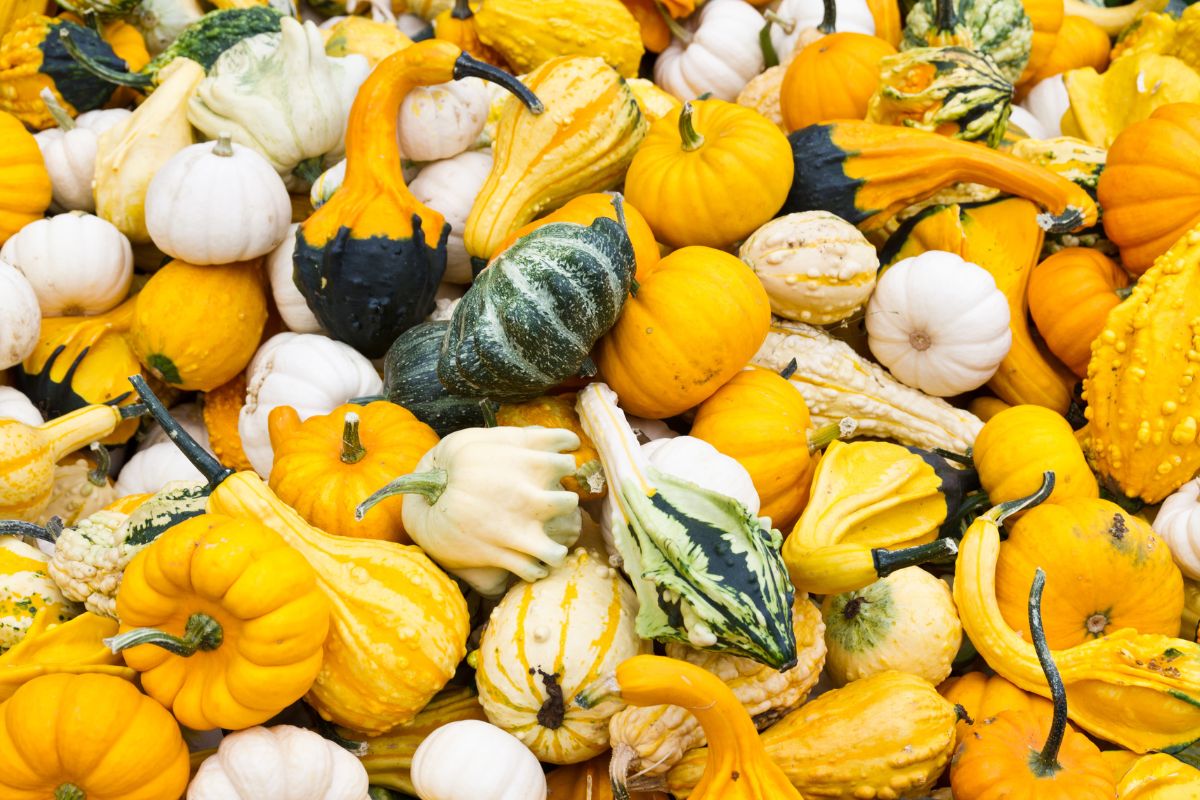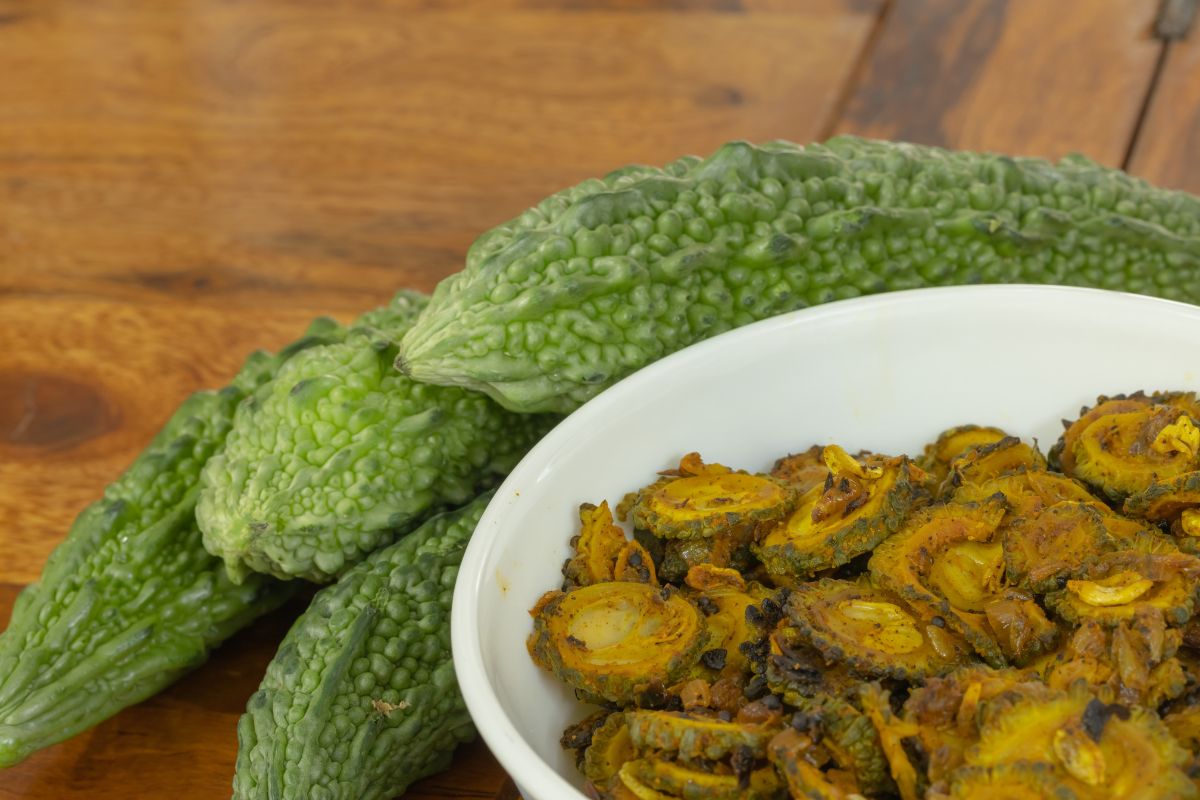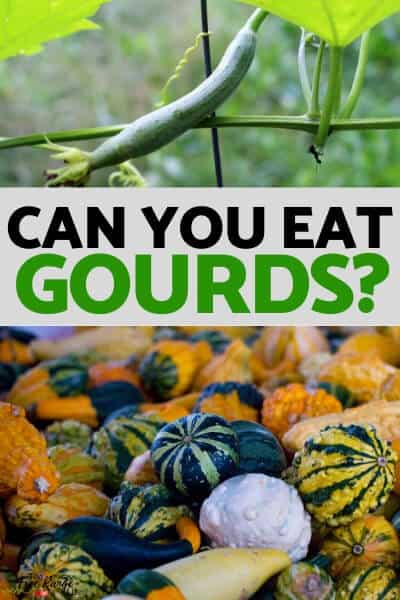We all know and love our pumpkins and winter squashes, but what about gourds? Can you eat gourds or are they better off as a fall decoration only?
I love gourds. Fun, colorful, decorative gourds or functional, dried gourds painted and turned into birdhouses or baskets.
This site contains affiliate links. If you make a purchase using one of these links, I may earn a commission. Please see my disclosure page for more information about cookies collected and our privacy policy.
But, can you eat them?
What is a Gourd?
A gourd is a member of the Cucurbitaceae family. Other notable members of this family include cucumbers, melons, squash, zucchini, and pumpkins.
There’s some confusion when it comes to gourds and squash, so let’s talk about the difference.
First we have squash. Squash is a broad term that includes winter squash (butternut squash, acorn squash, pumpkins, etc) and summer squash (yellow, crook-necked, zucchini).
Squash is typically the edible side of the family.
Then we have gourds. Gourd refers to specific species and subspecies of the Cucurbitaceae family. They are known for hard outer shells, especially when dried and hollowed.
Gourds are typically used for decoration and crafts, and not eating.
That said, are gourds edible?

Luffa gourds, when picked immature and green can be eaten!
Can You Eat Gourds?
In short. Yes. Gourds are edible. They won’t poison you or make you sick. But that doesn’t necessarily mean you will want to eat them.
Gourds are not bred for their taste. They taste like any other squash, only less flavorful and maybe more bitter.
For the most part, if you want to eat a cucurbit. Choose a squash. If you want to decorate or craft, choose a gourd.
How to Eat a Gourd
Now, if you are like me and you grow a lot of gourds for other uses, you may realize you have way too many and are just wondering, can I eat the extra gourds??
If this is you, here are the best way to eat gourds.
First, harvest gourds to eat when they are small and immature.
This means, pick them when the skin is still thin and the seeds aren’t fully formed.
Immature gourds will be softer, not as tough, and less bitter.
We grow zucca gourds– which grow to be over 100lbs and 3 ft tall, but when picked very small, they are similar to zucchini!
Gourds are in the same family, so growing them is very similar. Here’s how to grow squash!
How to Cook a Gourd
You can treat a gourd like any other squash.
If you picked it at the right time, you will cook it just like a summer squash or zucchini. Slice it or chop it and saute or roast.
You do want to cook gourds, not that raw is bad, but cooking will help improve the flavor and texture of the gourd.
If your gourd is getting harder, you will treat it more like a winter squash. Roast it in the oven and scoop out the flesh, discarding the tough, bitter skin.
And if you have a fully mature gourd- skip cooking and decorate with it instead! A pumpkin (butternut, spaghetti squash, or other winter squash) is a better choice to eat.
Related Reading: 15 Edible Weeds You Already Have in Your Yard!
Types of Edible Gourds – with Recipes!
The bottle gourd, or Calabash, is a commonly eaten gourd. When harvested young, it has smooth green skin and white flesh.
Bottle gourds are used in a variety of dishes such as curry or stews. Try one of these:
Luffa gourds may be best known as a natural sponge, but when harvested early and green, they are edible too!
Here’s some recipes to try featuring luffa gourds:
Or, try substituting gourds into one of these 50 Zucchini Recipes and see how it turns out!
Save for Later:





